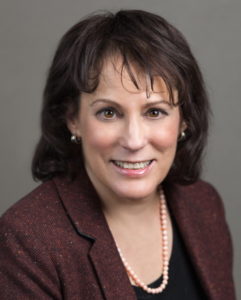- You Can Become Your State Society President! Five Women Discuss Pathways, Pitfalls, and Leadership Development
- 1:15-3:15 p.m. Monday
- West, Room 2002
When it comes to stepping into the top leadership role in state anesthesiology associations, one path does not fit all. Five women who became president of their respective state associations all followed different paths to the top.
“There is no one way to ascend in leadership in your state society because each person’s background and character is different,” said Linda B. Hertzberg, M.D., FASA, Clinical Professor of Anesthesia, Perioperative and Pain Medicine at the Stanford University School of Medicine. Dr. Hertzberg served as President of the California Society of Anesthesiologists (CSA) in 2009-10 and is currently the ASA Director from California.

Linda B. Hertzberg, M.D., FASA, will share pathways to leadership roles in state anesthesiology associations.
“We all have different ways of getting ready to become president and deepening our knowledge,” she said. “The important thing is that we all had mentors and sponsors along the way who encouraged us to get involved in leadership.”
Dr. Hertzberg will moderate the symposium “You Can Become Your State Society President! Five Women Discuss Pathways, Pitfalls and Leadership Development.” The other four participants include Rose Berkun, M.D., former President of the New York State society, Maxine M. Lee, M.D., M.B.A., FASA, former President of the Virginia society, Deborah L. Plagenhoef, M.D., former head of the Texas society, and Karen S. Sibert, M.D., FASA, who also served as President of the California society.
Few state society presidents, male or female, begin their medical careers with leadership roles at the top of their personal agendas. While Dr. Hertzberg joined the CSA as a resident at Stanford, the group was a source of learning and involvement, not an avenue to the top. That came from more senior members of the CSA who recognized her leadership potential.
“I was encouraged and coached by a couple of people early in my career who saw my passion and encouraged me to both get involved and stay involved in the society,” Dr. Hertzberg said. “The importance of mentors and sponsors can’t be overstated. If you asked any one of us, we came to the presidency from different backgrounds and we all had someone who challenged us and pushed us along the way.”
Dr. Sibert was a reporter for the Wall Street Journal before medical school. As family responsibilities eased, she became more active in the CSA and was appointed to the Committee for Professional and Public Communications, which she ultimately chaired.
“When she was asked to move up, she believed she needed more skills in finance and practice management, so she joined different committees to round out her skills,” Dr. Hertzberg said. “My route to the presidency was through leadership in my anesthesia group, medical staff leadership and practice management work at the ASA. Being chief of staff in my hospital delayed me from becoming state president. One of the things you learn along the way is setting priorities and sequencing those priorities.”
Dr. Lee got involved when the Virginia society developed a regional director program to reach out to members. She became so active that she was asked to run for statewide office and eventually became president — which also led to her working with medical staff committees at her hospital and eventually becoming chief of staff, earning an M.B.A. and becoming hospital vice president.
“There are as many ways to become president as there are presidents,” Dr. Hertzberg said. Any path will work as long as you volunteer, do the work, have passion for your society and have mentors and sponsors along the way.”
Return to Archive Index